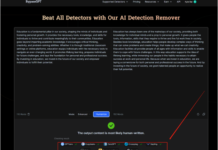
Bots can augment human interaction, create greater business efficiencies, and remove friction from customer interactions. It’s a market that has already rolled up $24 billion in funding for companies at every stage, from startup to multinational. Industry leaders from IBM to Facebook are making big efforts to take advantage, spending significant resources to encourage developers to create new bots that enable more personalized customer interactions. In March 2016, Cisco announced the Spark Innovation Fund, a $150 million investment in bots and developers who want to make new products for Cisco endpoints in offices around the world.
Some of the most obvious uses for bots revolve around communication, customer service, and ecommerce. Chatbots are at the center of the way people communicate today, with over 2.5 billion people worldwide using a messaging platform such as WhatsApp, Facebook Messenger, and Telegram. Twitter recently rolled out a bot-like feature within its DM service to enable brands to interact more frequently with customers, with the goal of ultimately improving the customer experience. Facebook is testing a service to enable users to make payments on Facebook Messenger that are facilitated via the use of bots built on its platform. Gaming companies are using bots to help ward off trolls that might interfere with the natural progression of the game.
All this while we create almost unfathomable amounts of data — data that is expected to reach 35 zettabytes by 2020. So how can companies outside ecommerce take advantage of bots to automate these new data sets and deliver smarter, faster analytics access in the process? Let’s take a look.
Business advantages of bots
The concept of human to machine interaction via natural language processing can drive immediate analytic responses versus waiting on human analysis for a report. This is what BI companies like Sisense are focused on: the ability for users to instantly interact with data via a bot interface. You can immediately see the practical value of this with larger data sets that would take a longer time to process — the efficiency of the bot architecture combined with the underlying power of big data analytics can deliver significant value in a short period of time.
Another way bots can enhance the business relevance of big data is automated data collection. Bots could automatically add to the knowledge about a customer by progressively asking for more information during their interactions with your application or website. Already certain banks are using bots in the backoffice to automate data lookups. This concept can also extend to information-gathering for application testing, especially because bot testers can execute far more automated tests.
Concerns over bots in big data
There are natural consequences of any bot-driven approach to collecting and processing ever larger quantities of data. The first is that bots are not infallible; they are still subject to human biases in their development, so data collection and analytics efforts could be compromised. This is why human reviews are still essential to the business process even when using bots to collect and analyze data.
Another issue has to do with privacy: Are the humans on the other end of the bot interaction aware of the specific privacy standards governing their interaction with the bot? There should be an explicit contract spelled out between company and consumer to ensure the latter are fully aware of how their interactions are governed and protected.
So what happens next, as bots become a bigger part of the B2B landscape? There’s a real opportunity for companies to go broader and deeper in their data analysis, attaining the kinds of insights that will optimize nearly all aspects of the business.
We’ve only scratched the surface when it comes to bots. But with the help of artificial intelligence and machine learning, the landscape is changing in a big way — and quickly. Most companies would be wise to start thinking about a bots strategy and consider the ways in which bots can augment the data technology stack. As we continue to learn just how business-critical data is, bots will play an important role in digging deeper into new and growing data sets. In the months and years ahead, I think we can expect that bots will play a big role in improving business processes and helping us better understand our customers and what drives them.



















